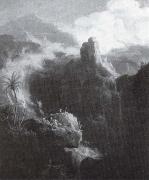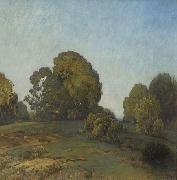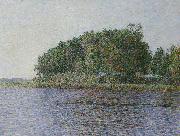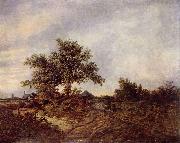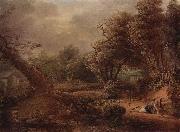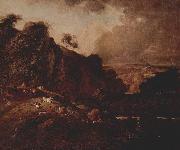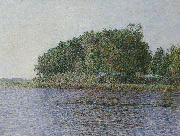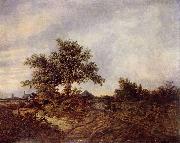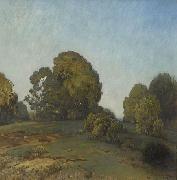Wholesale Oil Painting No Minimum |
|||||||||||
|
|
|||||||||||

|
|||||||||||
|
|
|
||||||||
Thomas Cole1801-1848 Thomas Cole Galleries Thomas Cole (February 1, 1801 - February 11, 1848) was a 19th century American artist. He is regarded as the founder of the Hudson River School, an American art movement that flourished in the mid-19th century. Cole's Hudson River School, as well as his own work, was known for its realistic and detailed portrayal of American landscape and wilderness, which feature themes of romanticism and naturalism. In New York he sold three paintings to George W. Bruen, who financed a summer trip to the Hudson Valley where he visited the Catskill Mountain House and painted the ruins of Fort Putnam. Returning to New York he displayed three landscapes in the window of a bookstore; according to the New York Evening Post, this garnered Cole the attention of John Trumbull, Asher B. Durand, and William Dunlap. Among the paintings was a landscape called "View of Fort Ticonderoga from Gelyna". Trumbull was especially impressed with the work of the young artist and sought him out, bought one of his paintings, and put him into contact with a number of his wealthy friends including Robert Gilmor of Baltimore and Daniel Wadsworth of Hartford, who became important patrons of the artist. Cole was primarily a painter of landscapes, but he also painted allegorical works. The most famous of these are the five-part series, The Course of Empire, now in the collection of the New York Historical Society and the four-part The Voyage of Life. There are two versions of the latter, one at the National Gallery in Washington, D.C., the other at the Munson-Williams-Proctor Arts Institute in Utica, New York. Cole influenced his artistic peers, especially Asher B. Durand and Frederic Edwin Church, who studied with Cole from 1844 to 1846. Cole spent the years 1829 to 1832 and 1841-1842 abroad, mainly in England and Italy; in Florence he lived with the sculptor Horatio Greenough. |
||||||||
|
|
||||||||
Landschaft
Landschaft Painting ID:: 45226 |
mk181
Komposition,der Heilige Johannes in der Wildnis
1827
mk181 Komposition,der Heilige Johannes in der Wildnis 1827 |
|||||||
|
|
||||||||
|
|
||||||||
|
|
Landschaft
Landschaft Painting ID:: 78966 |
Landschaft (oil on canvas)
Date 1909(1909)
cjr Landschaft (oil on canvas) Date 1909(1909) cjr |
||||||
|
|
||||||||
Paul Baumpainted Landschaft in 1896 |
||||||||
|
|
||||||||
|
|
Landschaft
Landschaft Painting ID:: 87047 |
Date 1896(1896)
Medium Oil on canvas
cjr Date 1896(1896) Medium Oil on canvas cjr |
||||||
|
|
||||||||
Paul Baumpainted Landschaft in 1896 |
||||||||
|
|
||||||||
|
|
Landschaft
Landschaft Painting ID:: 87069 |
Date 1896(1896)
Medium Oil on canvas
cjr Date 1896(1896) Medium Oil on canvas cjr |
||||||
|
|
||||||||
Jacob Isaacksz. van Ruisdaelpainted Landscape with Dune and Small Waterfall in 1646 |
||||||||
|
|
||||||||
|
|
Landschaft
Landschaft Painting ID:: 88993 |
1647(1647)
Medium oil on canvas
Dimensions 54 x 67 cm
cjr 1647(1647) Medium oil on canvas Dimensions 54 x 67 cm cjr |
||||||
|
|
||||||||
Philipp Hieronymus Brinckmann(or Brinkman,) a German painter and engraver, was born at Spires in 1709. He was a pupil of J. G. Dathan. His favourite subjects were landscapes, but he also painted historical subjects and portraits; in some of the latter he imitated the force and colouring of Rembrandt. He was painter to the Court, and keeper of the Gallery at Mannheim, where he died in 1761. In the Städel at Frankfort is a 'Swiss Landscape' signed P. H. Brinckmann fecit, 1745. He etched some plates in a picturesque and spirited style. |
||||||||
|
|
||||||||
|
|
Landschaft
Landschaft Painting ID:: 89736 |
c. 1750(1750)
Medium oil on panel
Dimensions 23 x 31,3 cm
cjr c. 1750(1750) Medium oil on panel Dimensions 23 x 31,3 cm cjr |
||||||
|
|
||||||||
Ferdinand Kobell(born in Mannheim, 7 June 1740; died in Munich, 1 February 1799) was a German painter and engraver. He was studying at the University of Heidelberg when the Elector of Bavaria, admiring a landscape, aided him to devote his entire time to painting. He became the pupil of Peter Verschaffelt. He next studied art in Paris (1768-1769). On his return, he was appointed painter to the Cabinet (court painter), and later professor at the Academy. In 1793, he moved to Munich. He was appointed director of the Mannheim Gallery (1798) but died before entering on his duties. |
||||||||
|
|
||||||||
|
|
Landschaft
Landschaft Painting ID:: 91614 |
1790-1799
Medium oil on canvas
Dimensions 52 X 60 cm
cjr 1790-1799 Medium oil on canvas Dimensions 52 X 60 cm cjr |
||||||
|
|
||||||||
Nicolae GrigorescuRomanian Painter, 1838-1907 From 1848 he trained in Bucharest with various church painters, producing icons and religious mural decorations. These works, which soon attracted attention, were influenced in style by the Viennese classicism widespread in the Romanian principalities in the early 19th century and by the Italian academicism established there after 1850 by Gheorghe Tattarescu. The earliest of his known paintings are in the church of SS Constantin and Elena at Baicoi, where his signature can be seen beside that of Nita Pereescu on the icon of St George (1853). He subsequently painted a series of icons (1854-5) at Caldarusani Monastery. In the later ensembles he was assisted by his older brother Georghe Grigorescu, who participated under his direction in the decoration of churches, such as those of the Zamfira (1856-8) and Agapia (1858-60) monasteries. In Nicolae's paintings at Agapia, classicism in Romanian art reached its highest point. The royal icons are distinguished for the elegance of the figures, both in their attitudes and in their drapery. |
||||||||
|
|
||||||||
|
|
Landschaft
Landschaft Painting ID:: 91616 |
second half of 19th century
Medium oil
cjr second half of 19th century Medium oil cjr |
||||||
|
|
||||||||
Paul Baumpainted Landschaft in 1896 |
||||||||
|
|
||||||||
|
|
Landschaft
Landschaft Painting ID:: 91761 |
1896(1896)
Medium oil on canvas
cyf 1896(1896) Medium oil on canvas cyf |
||||||
|
|
||||||||
Jacob Isaacksz. van Ruisdaelpainted Landscape with Dune and Small Waterfall in 1646 |
||||||||
|
|
||||||||
|
|
Landschaft
Landschaft Painting ID:: 92317 |
1647(1647)
Medium oil on canvas
Dimensions 54 X 67 cm
cyf 1647(1647) Medium oil on canvas Dimensions 54 X 67 cm cyf |
||||||
|
|
||||||||
Anton Ritter von Stadlerpainting Landschaft in 1909 |
||||||||
|
|
||||||||
|
|
Landschaft
Landschaft Painting ID:: 94878 |
oil on canvas)
Date 1909(1909)
cjr oil on canvas) Date 1909(1909) cjr |
||||||
|
|
||||||||
Lovis CorinthGerman Painter, 1858-1925 German painter and writer. He grew up on his family's farm and tannery. As a child he showed interest in art, taking informal lessons in drawing from a local carpenter and caricaturing his primary school teachers. Corinth's father sent him to secondary school in the nearby city of K?nigsberg (now Kaliningrad), where he lived with his widowed aunt. A superstitious woman fond of story-telling, she possessed what Corinth later described as a coarse temperament and an unrestrained, 'demonic' humour. These qualities and his aunt's bohemian acquaintances, including fortune-tellers and soothsayers, fascinated the young Corinth, accustomed to his more reserved parents. |
||||||||
|
|
||||||||
|
|
Landschaft
Landschaft Painting ID:: 97676 |
1910(1910)
Medium oil on canvas
Dimensions 75 x 99 cm
cyf 1910(1910) Medium oil on canvas Dimensions 75 x 99 cm cyf |
||||||
|
|
||||||||
|
Lovis Corinth German Painter, 1858-1925 German painter and writer. He grew up on his family's farm and tannery. As a child he showed interest in art, taking informal lessons in drawing from a local carpenter and caricaturing his primary school teachers. Corinth's father sent him to secondary school in the nearby city of K?nigsberg (now Kaliningrad), where he lived with his widowed aunt. A superstitious woman fond of story-telling, she possessed what Corinth later described as a coarse temperament and an unrestrained, 'demonic' humour. These qualities and his aunt's bohemian acquaintances, including fortune-tellers and soothsayers, fascinated the young Corinth, accustomed to his more reserved parents. Landschaft 1910(1910) Medium oil on canvas Dimensions 75 x 99 cm cyf |
||||||||
|
|
||||||||
|
Prev Next
|
||||||||
|
|
||||||||
|
Related Paintings to Lovis Corinth :. |
||||||||
|
|
||||||||
|
CONTACT US |
